Today gave us clear bright blue skies, heat and humidity.
Yesterday, when we visited the Hill of Prayer, when it rained, the mist rose up the mountains and it got so cold, it felt like we were in some other country in winter.
We basically covered the same area. Today, I have a more accurate map.

We went further than yesterday and visited Lake Linow, the traditional houses of Minahasa, looked into some Japanese caves, snacked on local pau at Kawang Koan, visited the Hill of Mercy which is set up to represent all 5 religious groups, etc etc.
I also found out that there are two types of Pisang Mas. One is fat and short, the same we get in Singapore. But there’s another thinner one.
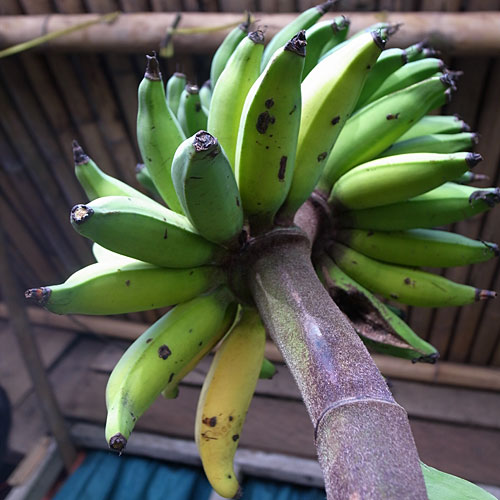
Both are equally sweet and liked by old people, it seems. My mother likes pisang mas, although I am more a fan of the kek leng chio (Indian Banana – ie the bananas favoured by Indian people.) Does that prove the theory that old people favour the pisang mas?
Lake Linow is known for it’s beauty, the three shades of green, the serenity.
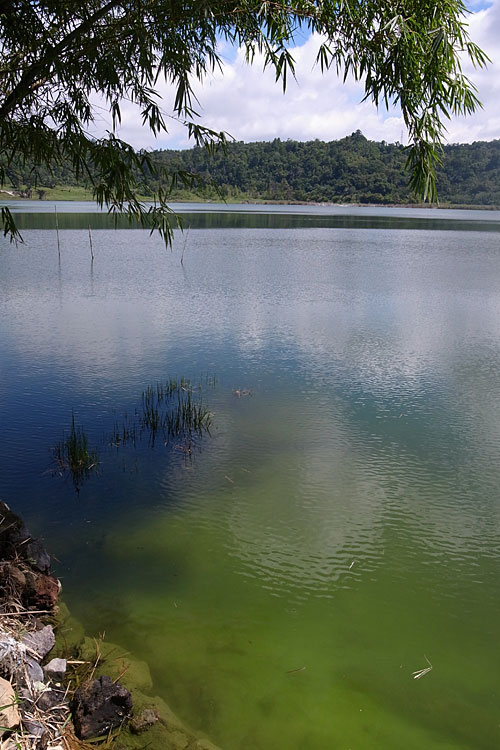
I think it is a crater filled with water. It looks like the water is boiling, but it’s just the gases coming out of fissures. The smell of sulphur is present, but very mild.
On the other side of the park, an old visitor centre, in front of the fumerols there, describing geo-thermal electricity, stands abandoned. There is no more electricity being harvested here.
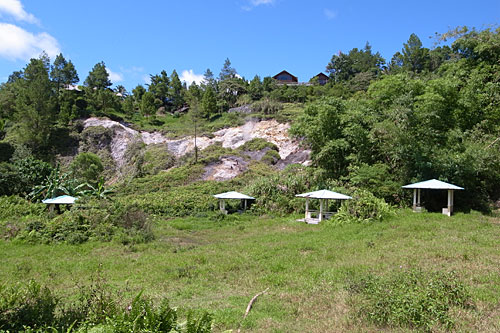
We were brought to see the original Minahasa house. Today, it comes pre-assembled. You go and find the house you want by walking through a real life sample, then it’s transported over to you.
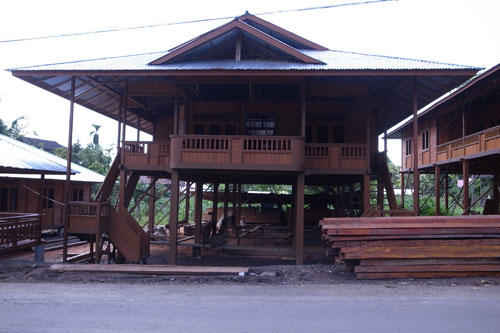
Notice the two stairs for each house. You’re supposed to not use the same stairs that you enter with to leave the house. It’s supposedly bad luck.
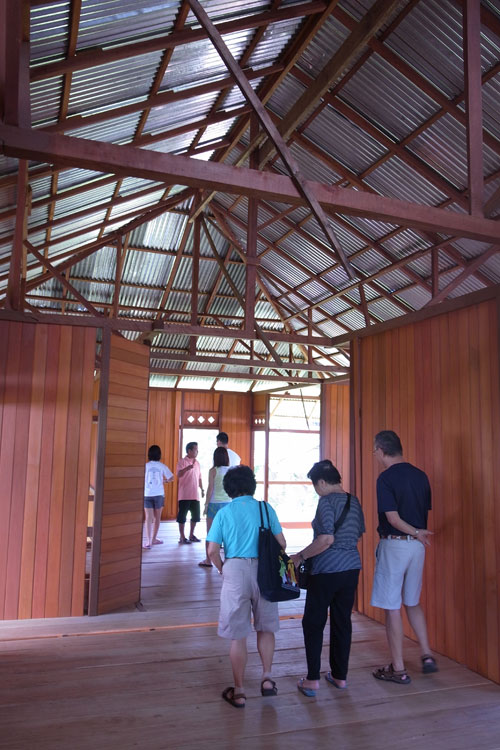
The house has a high roof and is very cool inside.
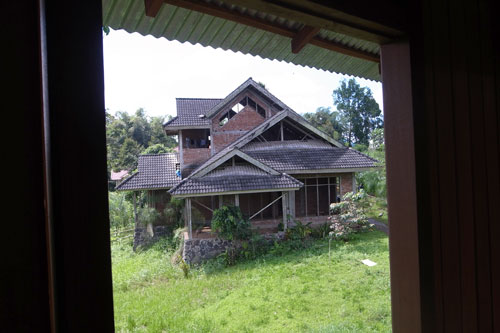
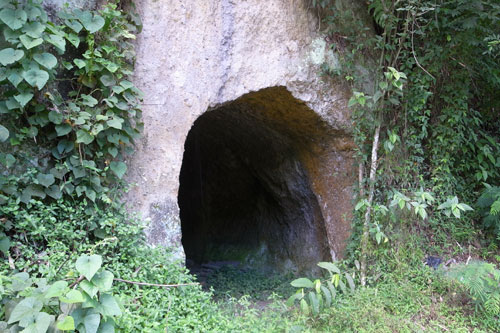
Along the way, we noticed these caves. They were once used by the Japanese to store ammunition and they imprisoned the local women, raped them and kept them there to give birth. I don’t know why they’d want the women to give birth. But that was the story told to me.
Over at the town of Kawangkoan, we sampled a local favourite – pao. It was a very crude pao, but people from all around Manado flock over here to eat it, on the way to visit and take a photo of Christ Blessing blessing them.
It comes in two flavours. Sesame and char siew. Char siew was more like a dai pau.
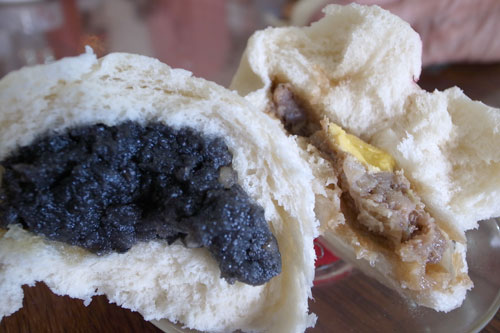
I found it like my aunt’s old attempts at making pau, when Hong Kong flour was not available to us.
But I was more intrigued by what I saw when I entered the shop:
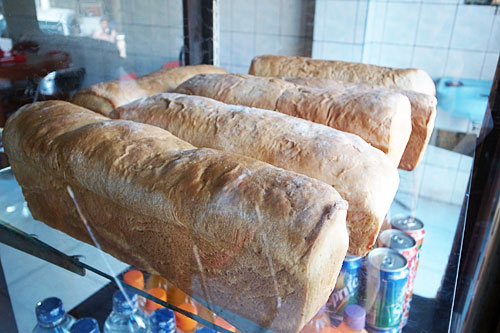
The outside texture of the bread looks like European bread, doesn’t it? Like a ciabatta or something.
The loaves are sliced and made into their version of Kaya Toast, which has no butter. It’s sticky, and sweet and coconutty.
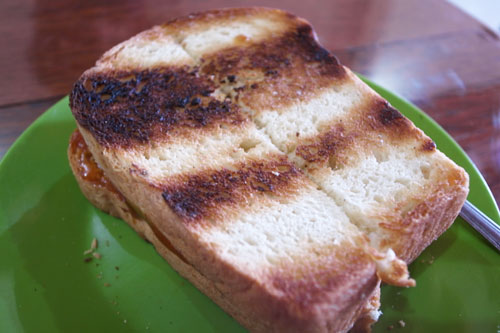
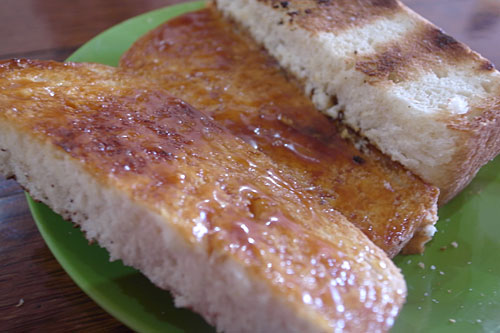
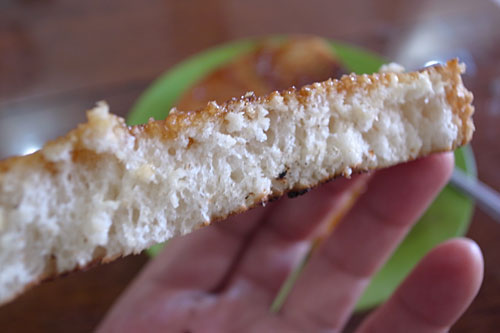
The bread was rough, chewy and heavy. It isn’t as bad as it sounds, and is worth a try, if only just once.
Kawangkoan is also the peanut capital of the place.
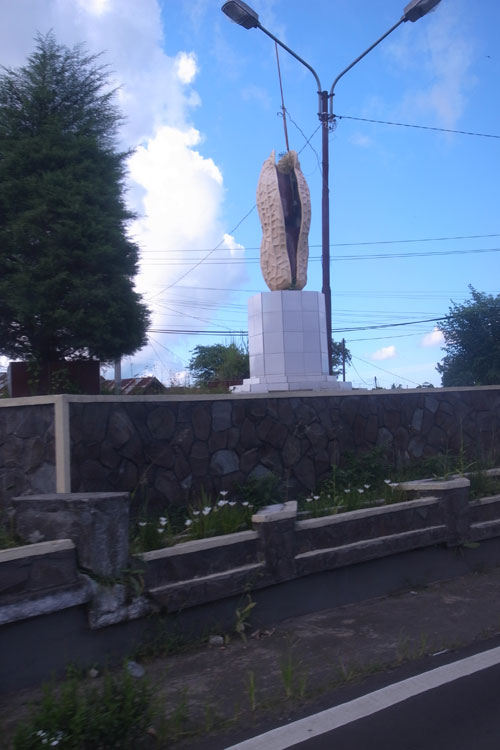
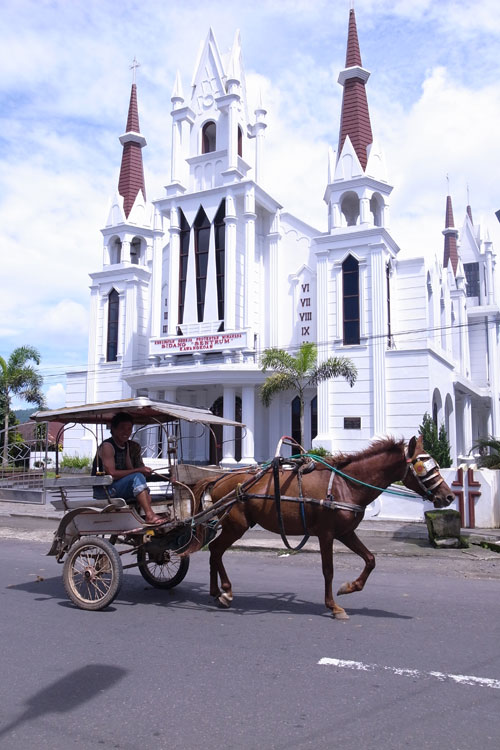
We also went to try out the hot springs, but it was very basic and a bit scary looking. Still, for under a buck, we tried it out for a while. It was not too hot. In fact, I thought it was not hot enough. And that’s a big deal, ’cause I hate hot things.
Just before that, we went up the Hill of Mercy, that represents the 5 religions in the area – Catholics, Protesants, Muslims, Buddhists and Hindus. To get up to the top is 2400 steps. I didn’t take the steps, but got high enough to see this.
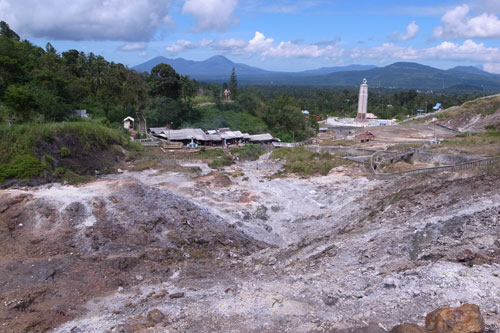
The hot springs here are hot enough to cook corn.
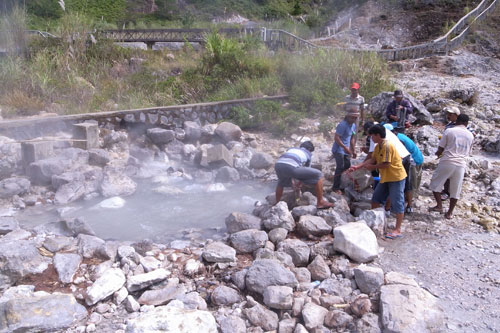
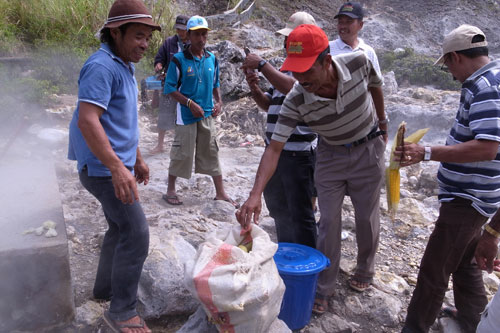
There’s other little things I did too. But I shall spare you the details. Plus, I still have my personal diary to update and this post is one lengthy one!
Let’s see if the weather holds up tomorrow. If so, then I may just attempt a discovery dive in Bunaken National Park.
